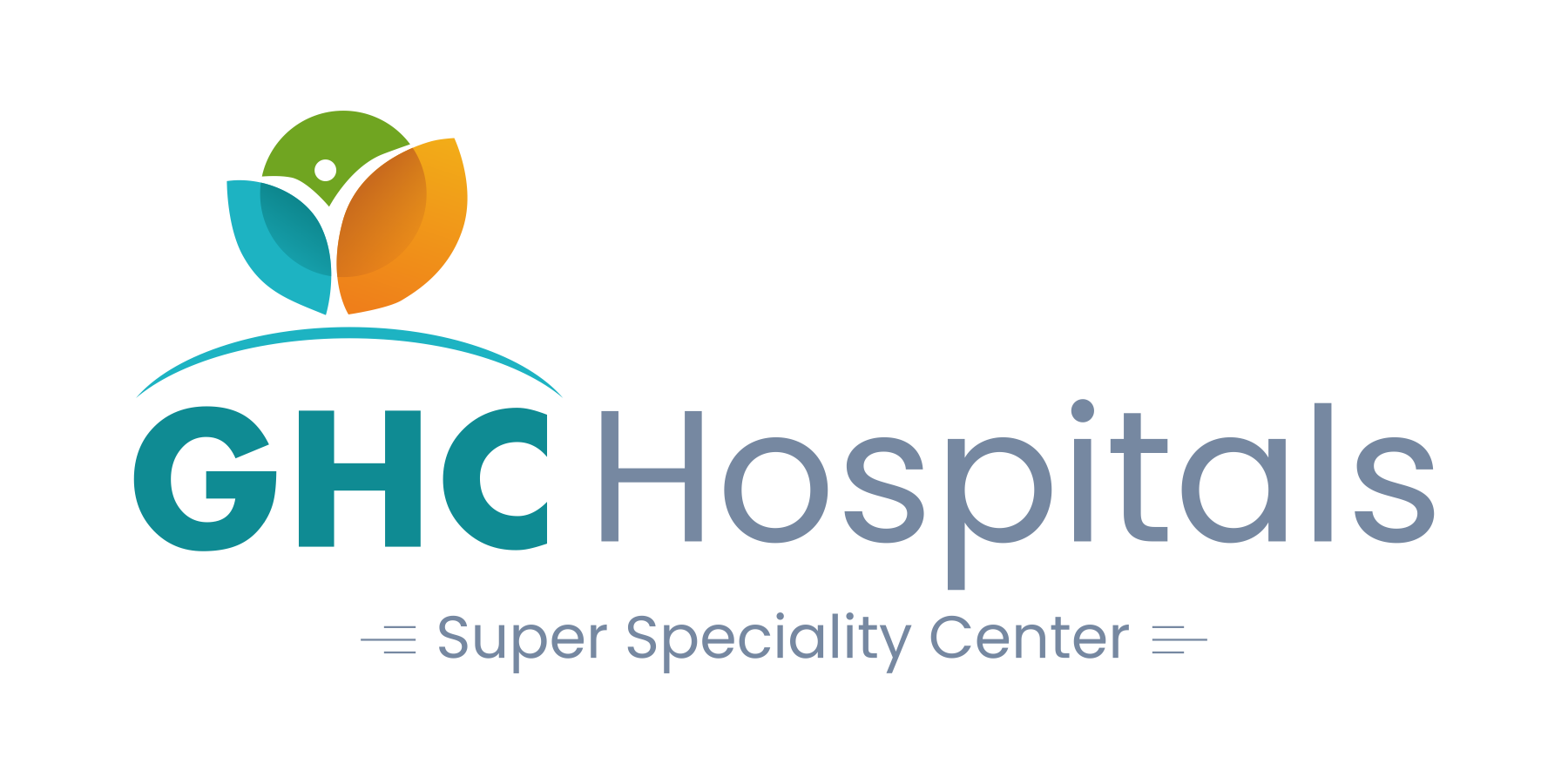
Mother & Child Care
Overview about the department
At GHC Hospitals, we understand the unique healthcare needs of mother and children. Our Mother & ChildCare Department is dedicated to caring for women of all ages, from adolescence to maternity, as well as specialized care for children. With a team of experienced and skilled professionals, we are committed to ensuring the health and well-being of both mother and children.
We provide ‘Complete & Comprehensive Care for Mother’s Health,’ managing a variety of conditions such as menorrhagia, endometriosis, ovarian cysts, infertility, cervical cancer, pregnancy & child birth, high-risk obstetrics (including diabetes, hypertension, cardiovascular diseases, hematologic conditions, and others).
Our Commitment to Mother’s Health and Childcare
We recognize that mother and children require specialized healthcare that addresses their unique physical, emotional, and developmental needs. Our mother & ChildCare Department brings together a team of experts who are dedicated to providing personalized care, innovative treatments, and a supportive environment for all stages of life.
Maternal Health Conditions
Pediatric Health Conditions
Our Services
Why Choose Us
Expert Team
Our team of obstetricians, gynecologists, pediatricians, and specialized nurses bring a wealth of experience to provide the highest standard of care.
Comprehensive Care
We offer a full spectrum of services, ensuring that all aspects of women’s health and child development are addressed under one roof.
Patient-Centric Approach
Our patient-centered care model places your comfort, preferences, and well-being at the forefront of our services.
Advanced Facilities
Our department is equipped with modern medical technology and facilities to ensure accurate diagnostics and effective treatments.
Supportive Environment
We create a supportive and nurturing environment where women and families can receive the care they need with empathy and compassion.
For women’s health and child care needs, contact our Women & Childcare Department at GHC Hospitals. Whether you’re an expectant mother, a new parent, or seeking specialized care for your child, our team is here to support you. At GHC Hospitals, we prioritize the health and happiness of women and children, and we are committed to providing comprehensive care for every stage of life.





Patient Experience at GHC Hospitals




Patient Experience at GHC Hospitals




FAQ's
- A PICU (Pediatric Intensive Care Unit) is a specialized medical facility within a hospital that provides critical care and intensive medical treatment for seriously ill infants, children, and adolescents. The PICU is staffed with a team of highly trained healthcare professionals, including pediatric intensivists, nurses, respiratory therapists, and other specialists. It caters to patients with life-threatening conditions, such as severe infections, respiratory distress, traumatic injuries, and complex surgeries. The PICU is equipped with advanced medical technology and monitoring devices to provide specialized care tailored to the unique needs of pediatric patients, ensuring the best possible outcomes for critically ill children.
- High-risk delivery refers to the condition where a pregnant woman or her baby faces increased medical complexities or potential complications during childbirth. Various factors can contribute to a high-risk delivery, including maternal health issues like gestational diabetes, preeclampsia, or heart problems, multiple pregnancies (twins, triplets), advanced maternal age, premature labor, and fetal developmental abnormalities. In such cases, specialized medical care and monitoring are essential to ensure a safe delivery for both the mother and baby. High-risk deliveries often take place in hospitals with access to obstetricians, neonatologists, and advanced medical facilities to manage any unforeseen challenges that may arise during childbirth.
- Vaccinations are crucial for protecting your child from preventable diseases. The recommended vaccines and their timing may vary based on your country’s immunization schedule and individual health considerations. However, some common vaccinations and age guidelines include:
- DTaP (Diphtheria, Tetanus, and Pertussis): Given at 2, 4, 6, and 15-18 months, with boosters at 4-6 years.
- MMR (Measles, Mumps, and Rubella): Administered at 12-15 months and a second dose at 4-6 years.
- Varicella (Chickenpox): Typically given at 12-15 months and a second dose at 4-6 years.
- Hib (Haemophilus influenzae type b): Given at 2, 4, and 6 months, with a booster at 12-15 months.
- PCV (Pneumococcal Conjugate Vaccine): Given at 2, 4, 6, and 12-15 months.
- Hepatitis B: Administered at birth, 1-2 months, and 6-18 months.
Always consult your pediatrician or healthcare provider for the most accurate and up-to-date vaccination schedule for your child.
The primary difference between a pediatrician and a neonatologist lies in their areas of specialization and the age groups they care for. A pediatrician is a medical doctor who specializes in providing comprehensive healthcare to children from birth to adolescence. They manage a broad range of pediatric conditions and perform routine check-ups, vaccinations, and developmental assessments.
On the other hand, a neonatologist is a pediatrician with additional training and expertise in caring for newborn infants, particularly those born prematurely or with critical medical conditions. Neonatologists work in neonatal intensive care units (NICUs) and provide specialized care for newborns during their first 28 days of life.
In summary, while both are pediatric specialists, pediatricians focus on general child health, while neonatologists specialize in the care of newborns, especially those with complex medical needs.
Newborns typically feed on demand, which means they should be fed whenever they show signs of hunger. In the first few weeks, this may be as often as 8-12 times a day, and each feeding session may last about 20-30 minutes. As babies grow, they may go longer between feedings, and the duration of each feeding may increase.
To establish a feeding routine, follow your baby’s cues for hunger and fullness. Look for signs of rooting, sucking motions, and alertness. Offer the breast or bottle whenever your baby shows hunger signs. Keeping track of feeding times and patterns can help identify regular intervals and establish a loose routine. Flexibility is essential, as newborns’ feeding needs may vary from day to day. Regular follow-ups with your pediatrician can also ensure your baby’s growth and development are on track.
Cesarean section (C-section) delivery may be indicated in various situations to ensure the safety of the mother and baby. Common indications include fetal distress, failure to progress in labor, breech or transverse fetal position, placental complications, multiple pregnancies, and certain maternal medical conditions. Emergency C-sections may be necessary if complications arise suddenly during labor.
C-section techniques involve making an incision in the abdominal wall and the uterus to deliver the baby. Different types of incisions, such as low transverse or vertical, may be used depending on the specific circumstances and the surgeon’s expertise. C-sections can be performed under general anesthesia or regional anesthesia like epidural or spinal anesthesia, allowing for a controlled and safe delivery.
Labor and childbirth are divided into three main stages:
- Stage 1: This is the longest stage and includes early labor, active labor, and transition. During early labor, the cervix begins to efface (thin out) and dilate (open). In active labor, contractions become stronger and more frequent, leading to further cervical dilation. Transition is the final phase of Stage 1, marked by intense contractions and full cervical dilation (10 cm).
- Stage 2: This is the pushing stage, where the baby moves through the birth canal and is born.
- Stage 3: After childbirth, the placenta is expelled from the uterus.
Each stage has its unique characteristics and is managed differently to ensure a safe and successful delivery.
- Yes, many healthcare providers and medical facilities offer Women Wellness health check packages specifically designed to address the unique health needs of women. These packages typically include a comprehensive range of screenings and tests, covering various aspects of women’s health, such as breast health, reproductive health, bone health, and overall well-being. Common components of these packages may include mammograms, Pap smears, pelvic exams, bone density tests, blood pressure checks, cholesterol screenings, and other relevant assessments. Women Wellness health check packages are essential for early detection and prevention of various health conditions, empowering women to take charge of their health and well-being.
- The Women & Child Care department offers a wide range of specialized services to cater to the healthcare needs of women and children. These services include prenatal care, antenatal classes, and high-risk pregnancy management for expectant mothers. Postnatal care, breastfeeding support, and neonatal care for newborns are also provided. Gynecological services, such as well-woman check-ups, family planning, and screening for gynecological conditions, are offered to women of all ages. The department may also provide pediatric services, including well-baby check-ups, immunizations, developmental assessments, and management of childhood illnesses. The goal is to promote optimal health and well-being for women and children through comprehensive and compassionate care.
The frequency of pediatrician visits depends on your child’s age and overall health. In the first year, regular check-ups are crucial for growth and development assessments, with visits typically scheduled at 2 weeks, 1, 2, 4, 6, 9, and 12 months. After the first year, annual check-ups are recommended. However, children with chronic conditions may require more frequent visits. Regular pediatrician visits allow for preventive care, vaccinations, monitoring milestones, and addressing any concerns or health issues promptly. Always follow the recommended schedule and consult your pediatrician if you have any questions or if your child develops new symptoms.
During labor and delivery, various pain management options are available to help ease discomfort and manage pain:
- Non-Medical Techniques: Breathing exercises, relaxation techniques, and laboring in water can provide comfort and distraction.
- Medications: Pain relief medications like epidurals or spinal blocks can be administered to numb the lower part of the body and reduce pain during labor.
- Nitrous Oxide: Also known as “laughing gas,” it provides mild pain relief and is self-administered by the laboring woman.
- Opioids: Intravenous or intramuscular opioids can be used for short-term pain relief during early labor.
- Acupuncture and Massage: These complementary therapies may help manage pain and promote relaxation during labor.
The choice of pain management depends on the woman’s preferences, medical condition, and the progress of labor. Obstetricians and midwives can discuss available options and help tailor the pain management plan to suit individual needs.
During labor and delivery, several potential complications can arise that require careful management:
- Prolonged Labor: Managed with patience, position changes, and if necessary, assisted delivery using forceps or vacuum extraction.
- Fetal Distress: Monitored closely, and interventions may include changing the mother’s position, administering oxygen, or expediting delivery through cesarean section.
- Postpartum Hemorrhage: Addressed with uterine massage, medication, or surgery if severe.
- Shoulder Dystocia: Managed by specific maneuvers to dislodge the baby’s shoulders and facilitate safe delivery.
- Infection: Treated with antibiotics if necessary.
- Umbilical Cord Issues: Managed by adjusting fetal position or emergency cesarean section.
Effective management depends on early detection, skilled medical teams, and prompt intervention to ensure the safety of both mother and baby.
Certainly! Nutrition is crucial for the healthy growth and development of infants and young children. For infants, exclusive breastfeeding is recommended for the first six months, followed by the introduction of solid foods while continuing breastfeeding until at least one year. Key foods to introduce include iron-fortified cereals, pureed fruits and vegetables, and gradually increasing textures and variety.
For young children, a balanced diet with adequate nutrients is essential. Offer a variety of foods from all food groups, including fruits, vegetables, whole grains, protein sources (meat, fish, beans, tofu), and dairy products. Limit added sugars, salt, and unhealthy fats. Encourage drinking water and limit sugary drinks. Offer meals and snacks at regular intervals and involve children in meal planning and preparation to develop healthy eating habits. Regular check-ups with a pediatrician can ensure proper growth and nutritional needs are met.
Yes, there are many women surgeons who provide medical care to female patients. Women surgeons are skilled and highly trained medical professionals who specialize in various surgical fields, including gynecological surgery, breast surgery, general surgery, and more. Having women surgeons can be beneficial for female patients, as they may feel more comfortable discussing sensitive health issues and may appreciate the understanding and empathy that can come from shared experiences. Women surgeons play a vital role in providing quality healthcare and addressing the specific needs of female patients in a compassionate and supportive manner.
FAQ's
- A PICU (Pediatric Intensive Care Unit) is a specialized medical facility within a hospital that provides critical care and intensive medical treatment for seriously ill infants, children, and adolescents. The PICU is staffed with a team of highly trained healthcare professionals, including pediatric intensivists, nurses, respiratory therapists, and other specialists. It caters to patients with life-threatening conditions, such as severe infections, respiratory distress, traumatic injuries, and complex surgeries. The PICU is equipped with advanced medical technology and monitoring devices to provide specialized care tailored to the unique needs of pediatric patients, ensuring the best possible outcomes for critically ill children.
- High-risk delivery refers to the condition where a pregnant woman or her baby faces increased medical complexities or potential complications during childbirth. Various factors can contribute to a high-risk delivery, including maternal health issues like gestational diabetes, preeclampsia, or heart problems, multiple pregnancies (twins, triplets), advanced maternal age, premature labor, and fetal developmental abnormalities. In such cases, specialized medical care and monitoring are essential to ensure a safe delivery for both the mother and baby. High-risk deliveries often take place in hospitals with access to obstetricians, neonatologists, and advanced medical facilities to manage any unforeseen challenges that may arise during childbirth.
- Vaccinations are crucial for protecting your child from preventable diseases. The recommended vaccines and their timing may vary based on your country’s immunization schedule and individual health considerations. However, some common vaccinations and age guidelines include:
- DTaP (Diphtheria, Tetanus, and Pertussis): Given at 2, 4, 6, and 15-18 months, with boosters at 4-6 years.
- MMR (Measles, Mumps, and Rubella): Administered at 12-15 months and a second dose at 4-6 years.
- Varicella (Chickenpox): Typically given at 12-15 months and a second dose at 4-6 years.
- Hib (Haemophilus influenzae type b): Given at 2, 4, and 6 months, with a booster at 12-15 months.
- PCV (Pneumococcal Conjugate Vaccine): Given at 2, 4, 6, and 12-15 months.
- Hepatitis B: Administered at birth, 1-2 months, and 6-18 months.
Always consult your pediatrician or healthcare provider for the most accurate and up-to-date vaccination schedule for your child.
The primary difference between a pediatrician and a neonatologist lies in their areas of specialization and the age groups they care for. A pediatrician is a medical doctor who specializes in providing comprehensive healthcare to children from birth to adolescence. They manage a broad range of pediatric conditions and perform routine check-ups, vaccinations, and developmental assessments.
On the other hand, a neonatologist is a pediatrician with additional training and expertise in caring for newborn infants, particularly those born prematurely or with critical medical conditions. Neonatologists work in neonatal intensive care units (NICUs) and provide specialized care for newborns during their first 28 days of life.
In summary, while both are pediatric specialists, pediatricians focus on general child health, while neonatologists specialize in the care of newborns, especially those with complex medical needs.
Newborns typically feed on demand, which means they should be fed whenever they show signs of hunger. In the first few weeks, this may be as often as 8-12 times a day, and each feeding session may last about 20-30 minutes. As babies grow, they may go longer between feedings, and the duration of each feeding may increase.
To establish a feeding routine, follow your baby’s cues for hunger and fullness. Look for signs of rooting, sucking motions, and alertness. Offer the breast or bottle whenever your baby shows hunger signs. Keeping track of feeding times and patterns can help identify regular intervals and establish a loose routine. Flexibility is essential, as newborns’ feeding needs may vary from day to day. Regular follow-ups with your pediatrician can also ensure your baby’s growth and development are on track.
Cesarean section (C-section) delivery may be indicated in various situations to ensure the safety of the mother and baby. Common indications include fetal distress, failure to progress in labor, breech or transverse fetal position, placental complications, multiple pregnancies, and certain maternal medical conditions. Emergency C-sections may be necessary if complications arise suddenly during labor.
C-section techniques involve making an incision in the abdominal wall and the uterus to deliver the baby. Different types of incisions, such as low transverse or vertical, may be used depending on the specific circumstances and the surgeon’s expertise. C-sections can be performed under general anesthesia or regional anesthesia like epidural or spinal anesthesia, allowing for a controlled and safe delivery.
Labor and childbirth are divided into three main stages:
- Stage 1: This is the longest stage and includes early labor, active labor, and transition. During early labor, the cervix begins to efface (thin out) and dilate (open). In active labor, contractions become stronger and more frequent, leading to further cervical dilation. Transition is the final phase of Stage 1, marked by intense contractions and full cervical dilation (10 cm).
- Stage 2: This is the pushing stage, where the baby moves through the birth canal and is born.
- Stage 3: After childbirth, the placenta is expelled from the uterus.
Each stage has its unique characteristics and is managed differently to ensure a safe and successful delivery.
- Yes, many healthcare providers and medical facilities offer Women Wellness health check packages specifically designed to address the unique health needs of women. These packages typically include a comprehensive range of screenings and tests, covering various aspects of women’s health, such as breast health, reproductive health, bone health, and overall well-being. Common components of these packages may include mammograms, Pap smears, pelvic exams, bone density tests, blood pressure checks, cholesterol screenings, and other relevant assessments. Women Wellness health check packages are essential for early detection and prevention of various health conditions, empowering women to take charge of their health and well-being.
- The Women & Child Care department offers a wide range of specialized services to cater to the healthcare needs of women and children. These services include prenatal care, antenatal classes, and high-risk pregnancy management for expectant mothers. Postnatal care, breastfeeding support, and neonatal care for newborns are also provided. Gynecological services, such as well-woman check-ups, family planning, and screening for gynecological conditions, are offered to women of all ages. The department may also provide pediatric services, including well-baby check-ups, immunizations, developmental assessments, and management of childhood illnesses. The goal is to promote optimal health and well-being for women and children through comprehensive and compassionate care.
The frequency of pediatrician visits depends on your child’s age and overall health. In the first year, regular check-ups are crucial for growth and development assessments, with visits typically scheduled at 2 weeks, 1, 2, 4, 6, 9, and 12 months. After the first year, annual check-ups are recommended. However, children with chronic conditions may require more frequent visits. Regular pediatrician visits allow for preventive care, vaccinations, monitoring milestones, and addressing any concerns or health issues promptly. Always follow the recommended schedule and consult your pediatrician if you have any questions or if your child develops new symptoms.
During labor and delivery, various pain management options are available to help ease discomfort and manage pain:
- Non-Medical Techniques: Breathing exercises, relaxation techniques, and laboring in water can provide comfort and distraction.
- Medications: Pain relief medications like epidurals or spinal blocks can be administered to numb the lower part of the body and reduce pain during labor.
- Nitrous Oxide: Also known as “laughing gas,” it provides mild pain relief and is self-administered by the laboring woman.
- Opioids: Intravenous or intramuscular opioids can be used for short-term pain relief during early labor.
- Acupuncture and Massage: These complementary therapies may help manage pain and promote relaxation during labor.
The choice of pain management depends on the woman’s preferences, medical condition, and the progress of labor. Obstetricians and midwives can discuss available options and help tailor the pain management plan to suit individual needs.
During labor and delivery, several potential complications can arise that require careful management:
- Prolonged Labor: Managed with patience, position changes, and if necessary, assisted delivery using forceps or vacuum extraction.
- Fetal Distress: Monitored closely, and interventions may include changing the mother’s position, administering oxygen, or expediting delivery through cesarean section.
- Postpartum Hemorrhage: Addressed with uterine massage, medication, or surgery if severe.
- Shoulder Dystocia: Managed by specific maneuvers to dislodge the baby’s shoulders and facilitate safe delivery.
- Infection: Treated with antibiotics if necessary.
- Umbilical Cord Issues: Managed by adjusting fetal position or emergency cesarean section.
Effective management depends on early detection, skilled medical teams, and prompt intervention to ensure the safety of both mother and baby.
Certainly! Nutrition is crucial for the healthy growth and development of infants and young children. For infants, exclusive breastfeeding is recommended for the first six months, followed by the introduction of solid foods while continuing breastfeeding until at least one year. Key foods to introduce include iron-fortified cereals, pureed fruits and vegetables, and gradually increasing textures and variety.
For young children, a balanced diet with adequate nutrients is essential. Offer a variety of foods from all food groups, including fruits, vegetables, whole grains, protein sources (meat, fish, beans, tofu), and dairy products. Limit added sugars, salt, and unhealthy fats. Encourage drinking water and limit sugary drinks. Offer meals and snacks at regular intervals and involve children in meal planning and preparation to develop healthy eating habits. Regular check-ups with a pediatrician can ensure proper growth and nutritional needs are met.
Yes, there are many women surgeons who provide medical care to female patients. Women surgeons are skilled and highly trained medical professionals who specialize in various surgical fields, including gynecological surgery, breast surgery, general surgery, and more. Having women surgeons can be beneficial for female patients, as they may feel more comfortable discussing sensitive health issues and may appreciate the understanding and empathy that can come from shared experiences. Women surgeons play a vital role in providing quality healthcare and addressing the specific needs of female patients in a compassionate and supportive manner.
